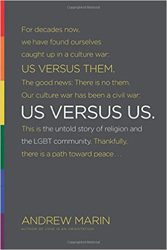 A number of years ago, in the course of teaching a class in Wesley Theological Seminary’s Lay School, I discovered that virtually all my students had experience in various forms of complementary and global medicine and none of them had shared this with her or his pastor. These were not back row Christians but moderators, parish caregivers, and church school teachers. This experience inspired me to write Reiki Healing Touch and the Way of Jesus as a way of introducing reiki and Chinese/Japanese healing practices to pastors, and helping lay people bridge the gap between their daily spiritual practices, often from other religious traditions, and their Christian faith.
A number of years ago, in the course of teaching a class in Wesley Theological Seminary’s Lay School, I discovered that virtually all my students had experience in various forms of complementary and global medicine and none of them had shared this with her or his pastor. These were not back row Christians but moderators, parish caregivers, and church school teachers. This experience inspired me to write Reiki Healing Touch and the Way of Jesus as a way of introducing reiki and Chinese/Japanese healing practices to pastors, and helping lay people bridge the gap between their daily spiritual practices, often from other religious traditions, and their Christian faith.
We are in a time of growing inter-spirituality or hybrid spirituality in which people integrate a variety of practices from different faith traditions with little or no experienced dissonance. For example, the soprano in the choir may also practice yoga on a daily basis. The chair of the congregation’s trustees may be an avid follower of the Dalai Lama and practice the breathing prayers taught by Thich Nhat Hanh. The youth leader may also go on Zen Buddhist retreats, and the pastor may be a closeted reiki practitioner. This can lead to some exciting spiritual experiences, but it can also lead to religious confusion if persons cannot integrate their Sunday worship and church commitments with their daily spiritual practices.
This is at the heart of Dana Trent’s spiritual adventure, captured in her new book, Saffron Cross: The Unlikely Story of How a Baptist Minister Married a Hindu Monk. While she remains staunchly Christian, her faith in Christ is deepened by her participation in her husband’s Hindu practices. She embodies a healthy hybridity, grounded in mutual respect and affirmation of otherness.
Many of us embody the spirit of the “saffron cross” both in our marriages and personal spiritual lives. The challenge is, of course, finding a pathway to theological and spiritual integration. Not all rivers flow to the same sea, nor is there one pathway to one mountains; there are many rivers and many seas and many paths to many mountains. While there are similarities, for example, between the bhakti (devotional) yoga practiced by Dana Trent’s husband, most Christians, including myself, are not inclined to see Krishna and Christ as incarnations of the same theological reality, place all avatars on the same level, or assume that they point to the same theological or spiritual reality. There are different understandings of the nature of history, the goals of human life, the relationship of mind and body, and the role of divinity in the historical process.
We need to be honest about the unique frameworks of the various wisdom traditions. Judaism and Christianity both affirm what Rabbi Abraham Joshua Heschel called the “divine pathos,” God’s concern with the minute details of domestic life and economics. Jesus is seen as the word made flesh, whose passion and suffering are real and not illusory. In light of the cross and the dynamic interdependence of God and the world, many Christians now affirm the suffering-celebrating God. Hindus, as Dana Trent notes, affirm that God experiences our feelings of worship, but they are more detached from history than the God of the prophets and Jesus Christ.
When Dana Trent notes that Christ is present in the least of these and that taking care of other people is our service to God, her husband Fred partially agrees, but goes on to say, “this temporary body is going to die no matter how much food we give it or how much medicine we take. It is the soul that needs nourishment.” Followers of Jesus would affirm that the soul needs nourishment, and that also you cannot separate body and soul, and that the nurture of the soul often comes through acts of mercy, justice keeping, and economic justice. Jesus united body, mind, spirit, and relationships as equally important in our relationship with God.
Having noted the importance of honoring the unique paths of religious traditions, I still believe that it is important to integrate our various spiritual practices. My own journey is profoundly inter-spiritual. I returned to active Christian faith, in part, as a result of learning Transcendental Meditation at a Berkeley, California, ashram in 1970. I find great insight in the writings of Thich Nhat Hanh, the Dalai Lama, and the Tao te Ching (Dao de Jing). I am a reiki teacher-master, following in the footsteps of Japanese healer Mikao Usui. I see reiki healing touch as congruent with the healings of Jesus.
As a Christian, I believe the truth present in Christ is also present in different forms in other traditions. This morning at a seminar on “healing and Christianity” at our church, I made connections between Jesus’ healing ministry, qigong, reiki healing, and yoga. Such connections can – and need to be – made if inter-spirituality is to lead to greater stature and integrity rather than internal spiritual balkanization.
Dana Trent provides us insight into interfaith spirituality at its best: honoring other wisdom traditions, affirming one’s own faith, being clear about the unique gifts and differing characteristics of the varied wisdom traditions, and being willing to grow in relationship to God’s many spiritual pathways. Such hybrid approaches do not, as Trent notes, water down our Christian (or Hindu) spirituality but may deepen our commitment to our home spirituality in a world of plurality.
Read an excerpt from Saffron Cross at the Patheos Book Club here.













